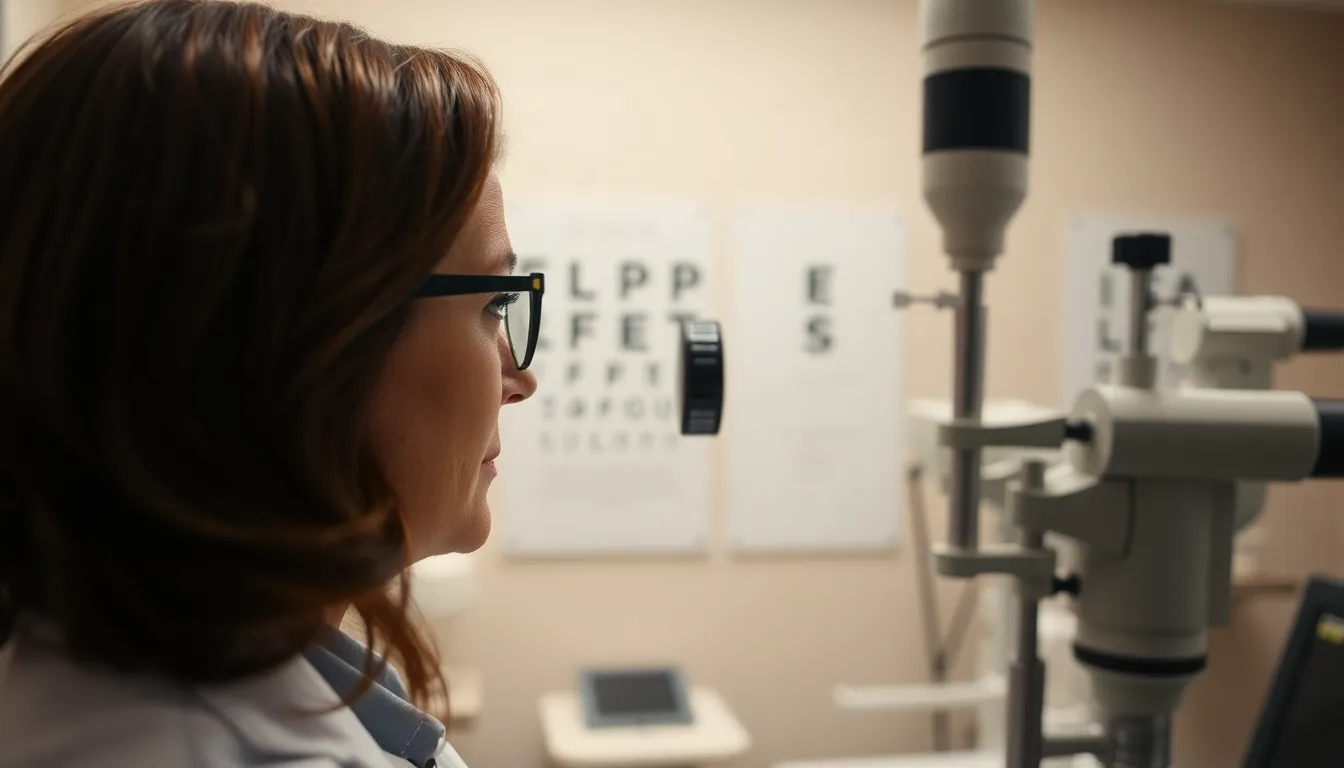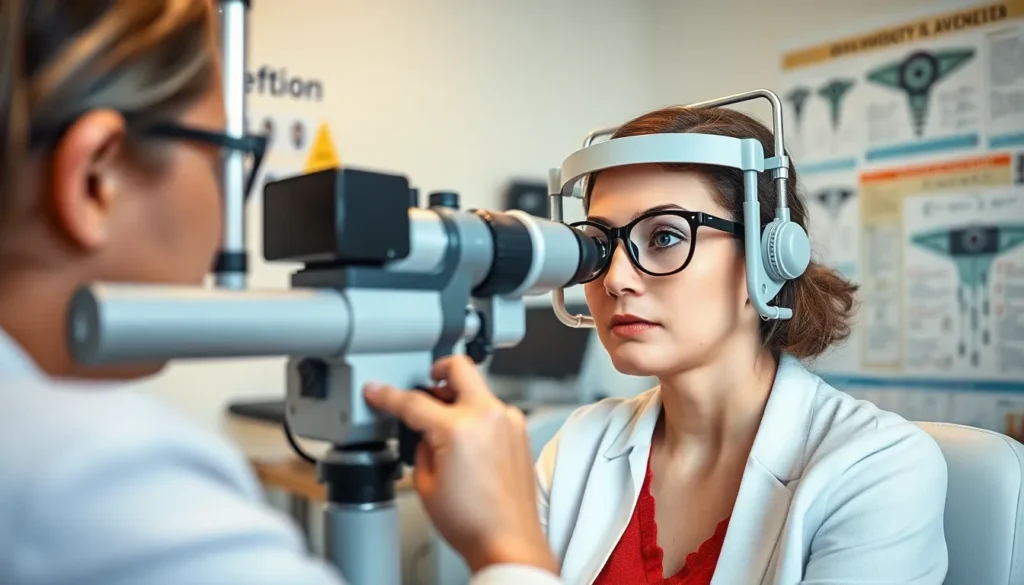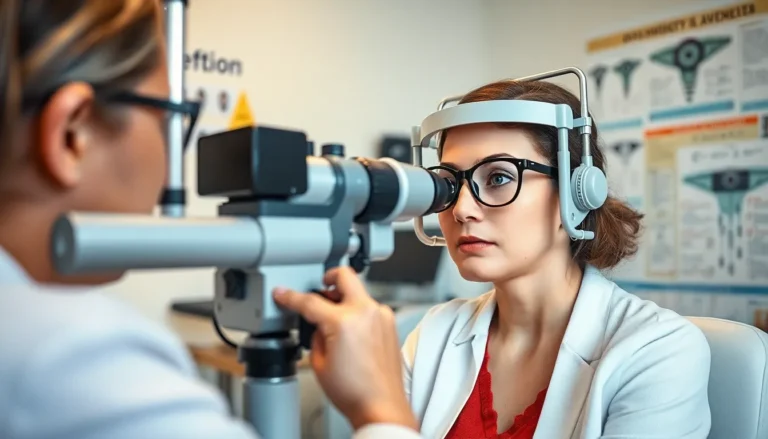Table of Contents
ToggleHomorzopia disease might sound like a character from a sci-fi movie, but it’s a real condition that can throw a wrench in anyone’s daily life. If you’ve ever felt like your body’s playing a game of hide and seek with your health, you’re not alone. Testing for this quirky ailment can feel daunting, but fear not! With the right approach, it can be as easy as pie—well, maybe not pie, but you get the idea.
Understanding Homorzopia Disease
Homorzopia disease affects individuals in various ways, making daily activities challenging. A deeper understanding of its definition, symptoms, causes, and risk factors can lead to effective management and testing.
Definition and Symptoms
Homorzopia disease represents a rare genetic condition characterized by visual distortion. Individuals commonly experience difficulties in depth perception, leading to problems with spatial awareness. Common symptoms include blurred or double vision, headaches, and challenges focusing on objects. Many report visual hallucinations or color changes in their surroundings, further complicating daily tasks. Early recognition of these symptoms plays a crucial role in timely diagnosis and intervention.
Causes and Risk Factors
Genetic mutations significantly contribute to the onset of Homorzopia disease. Inherited conditions often pass down through family lines, increasing the likelihood of occurrence. Environmental factors may exacerbate symptoms, such as prolonged screen time or exposure to bright light. Certain demographics, including individuals with a family history of visual disorders, face higher risks. Age also serves as a factor, as symptoms may intensify with advancing years. Understanding these causes and risk factors underscores the importance of early testing.
Methods of Testing for Homorzopia Disease

Testing for Homorzopia disease involves various methods for accurate diagnosis and effective management. Both clinical assessments and laboratory tests play crucial roles in identifying the condition.
Clinical Assessments
Clinical assessments evaluate visual function and symptoms. An ophthalmologist conducts comprehensive eye examinations to identify vision problems. They assess visual acuity by measuring how well a person sees at various distances. Additionally, doctors perform a visual field test to evaluate peripheral vision and depth perception. Specialists may also use tests that assess eye coordination and tracking abilities. Observing the patient’s symptoms, such as headaches or blurred vision, provides important context for diagnosis. These assessments help healthcare providers make informed decisions about further testing or referrals.
Laboratory Tests
Laboratory tests enhance the diagnostic process for Homorzopia disease. Genetic testing identifies specific mutations associated with the disease, confirming the diagnosis. Blood samples often undergo analysis to evaluate potential inherited conditions. Imaging tests, such as MRI or CT scans, can reveal changes in brain structure that affect vision. Moreover, these tests assist in ruling out other conditions that may produce similar symptoms. Providers may recommend additional evaluations based on the initial laboratory findings. Such comprehensive testing ensures accurate diagnosis and tailored management strategies.
Diagnostic Imaging Techniques
Diagnostic imaging techniques play a vital role in identifying Homorzopia disease. Two primary methods used include ultrasound imaging and genetic testing.
Ultrasound Imaging
Ultrasound imaging offers a non-invasive approach to assess eye structure and function. This method uses sound waves to create images of the eye’s internal components. Physicians can evaluate abnormalities or structural issues that may contribute to visual distortions. Regular checks during an eye exam may provide insights into the condition. Results from ultrasound can guide further diagnostic decisions, ensuring a comprehensive evaluation.
Genetic Testing
Genetic testing is crucial for confirming Homorzopia disease. Through this testing, healthcare providers can identify specific genetic mutations associated with the condition. Blood samples often serve as the source for analyzing DNA. Testing helps differentiate Homorzopia from similar disorders, leading to more effective management strategies. Additionally, understanding genetic factors aids in assessing the risk for family members. Identifying these mutations allows doctors to tailor treatment and support for individuals diagnosed with this disease.
Interpreting Test Results
Interpreting test results for Homorzopia disease requires careful evaluation of findings. Understanding both normal and abnormal results can guide next steps in management.
Normal versus Abnormal Findings
Normal findings typically indicate no visual distortions, suggesting absence of Homorzopia disease. Clear visual acuity and appropriate depth perception signify healthy visual processing. In contrast, abnormal findings may reveal vision impairments. Blurred or double vision alongside significant discrepancies in depth perception often suggest Homorzopia. Genetic testing results may also highlight specific mutations associated with the disorder. These abnormalities serve as crucial indicators, prompting further investigation and intervention strategies tailored to individual needs.
Next Steps After Diagnosis
Following diagnosis, personalized management plans become essential. Healthcare providers often recommend regular follow-up appointments to monitor symptoms. Rehabilitation services, such as vision therapy, can enhance daily functioning for individuals. Support groups offer valuable connections for emotional support and shared experiences. Family members may consider genetic counseling to understand inherited risk factors better. Engaging in lifestyle modifications can also improve quality of life and daily functioning. These steps create a comprehensive approach to living with Homorzopia disease.
Testing for Homorzopia disease is a vital step towards effective management and improved quality of life. By recognizing symptoms early and seeking appropriate clinical assessments and laboratory tests, individuals can navigate the complexities of this condition. The integration of advanced imaging techniques and genetic testing not only aids in accurate diagnosis but also helps tailor treatment plans to meet individual needs.
With ongoing support and regular follow-ups, those affected by Homorzopia can lead fulfilling lives. Understanding the genetic implications and available resources empowers patients and their families to make informed decisions. Embracing these strategies fosters a proactive approach to managing Homorzopia disease, ultimately enhancing overall well-being.








